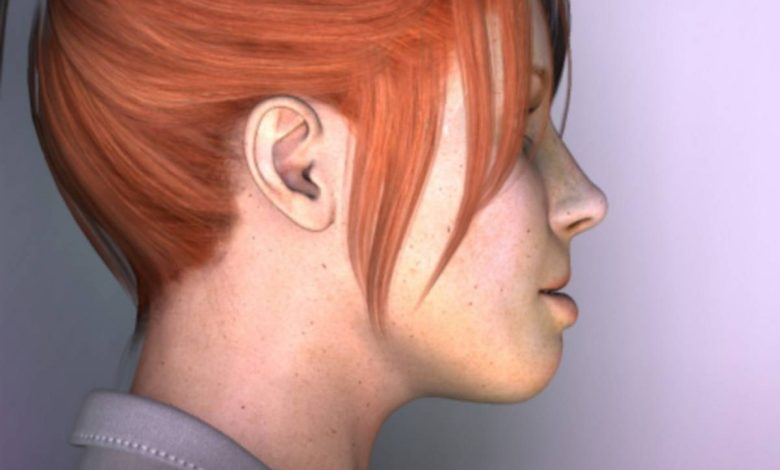Prognathism (protrusion of the lower jaw): What's it, causes, symptoms, diagnostics, treatment, prevention

Prognathism; Extended chin; Underbite
What is prognathism?
Prognathism is the expansion or protrusion of the lower jaw (mandibles). It happens, when teeth are misaligned due to the shape of the facial bones. It may be a genetic disease or the result of such factors., like an injury, disease.
Causes of prognathism
Prognathism may be caused by genetic factors, injuries, illness or birth injury.
- Genetic factors. Prognathism is often hereditary, passed down from generation to generation. It can also be caused by genetic syndromes, including Cruson's syndrome, Apert's syndrome and clavicle-cranial dysplasia.
- Trauma. Prognathism can also be caused by trauma to the jaw or head.. It is often seen after a car accident or sports injury..
- Disease. Prognathism is associated with some diseases, such as Ehlers-Danlos syndrome, phenylketonuria, diabetes, hypoparathyroidism and endocrine disorders.
- Birth injury. Prognathia can be caused by trauma during childbirth.
Symptoms of prognathism
The most common sign of prognathism is a protruding lower jaw and chin.. Other symptoms may include:
- Prominent chin.
- Malocclusion, in which the upper teeth protrude beyond the lower.
- Bone prominence along the midline of the jaw.
- Facial asymmetry
- Crowding of teeth
- Difficulty chewing or speaking words clearly
- Facial pain or discomfort
When to see a doctor
If you notice any symptoms of prognathism, you should see a doctor. They can assess your condition and recommend a course of treatment..
Questions, that your doctor may ask
When meeting with your doctor, he may ask you a few questions, to determine the cause and the best course of treatment. These questions may include:
- When did you first notice the symptoms of prognathism??
- Do you have family members with similar symptoms?
- Have you had an injury or injury to your jaw or head?
- Do you have other health problems?
- Are you experiencing any pain or discomfort due to your symptoms??
Diagnosis of prognathism
Your health care provider may perform several tests to diagnose the condition and determine the best course of treatment.. These tests may include:
- X-ray of the jaw and neck to determine the size and shape of the jawbone.
- Computed tomography to assess the jaw joint.
- Disease history, to determine, whether injury or illness can cause the condition.
- Physical examination to assess facial asymmetry and jaw alignment.
- Genetic testing, to determine, whether a genetic disease is the cause of the disease.
Treatment of prognathism
Treatment for prognathia will depend on the cause., the severity of the condition and the age of the patient. In some cases, treatment may not be required. In other cases, treatment may include:
- Braces. Braces are often used to correct the position of the teeth and jaw..
- Operation. In some cases, surgery may be required to reshape the jaw.
- Physiotherapy. Physiotherapy can be used to improve facial symmetry and jaw alignment.
- Medicines. In some cases, medications may be prescribed, to relieve pain and discomfort, associated with prognathism.
Home treatment for prognathia
If you have been diagnosed with prognathism, there are several home treatment options, which you can use, to manage symptoms. These may include:
- Using over-the-counter pain relievers as needed, to deal with any pain or discomfort.
- Applying hot and cold compresses to reduce inflammation and pain.
- Using a mouthguard during sports or high impact activities to protect the jaw.
- Doing Facial Exercises, helping to improve the symmetry of the face and the correct position of the jaws.
- Place soft foods in a blender or food processor, to make them easier to chew.
Prevention of prognathism
Prognosis is not always preventable, as it is often caused by genetic factors or trauma. Nonetheless, there are several steps, you can take, to reduce the risk. These include:
- Wear a hat, to protect teeth and jaw, when you play contact sports or engage in vigorous activities.
- Know your family's medical history. If you have a family history of genetic syndromes, which can cause prognosis, be aware of the risks.
- Maintain proper oral hygiene. It may help prevent infections and other diseases., which can lead to rupture.
- Take precautions during childbirth. Check, that your doctor is aware of any medical history, which may increase the risk of prognathism.
Used sources and literature
Dhar V. Malocclusion. In: Kliegman RM, St. Geme JW, Bloom NJ, Shah SS, Tasker RC, Wilson KM, eds. Nelson Textbook of Pediatrics. 21st ed. Philadelphia, PA: Elsevier; 2020:chap 335.
Goldstein JA, Baker SB. Cleft and craniofacial orthognathic surgery. In: Rodriguez ED, Losee IS, Neligan PC, eds. Plastic Surgery: Volume 3: Craniofacial, Head and Neck Surgery and Pediatric Plastic Surgery. 4th ed. Philadelphia, PA: Elsevier; 2018:chap 28.
Koroluk LD. Adolescent patients. In: Stefanac SJ, Nesbit SP, eds. Diagnosis and Treatment Planning in Dentistry. 3rd ed. St Louis, MO: Elsevier; 2017:chap 16.
